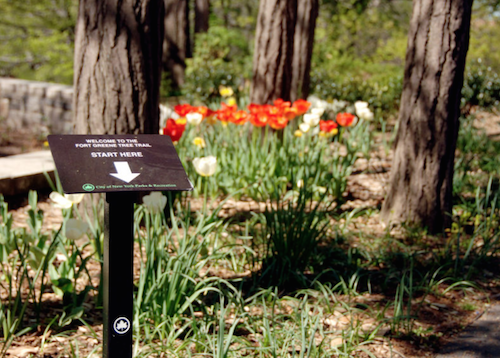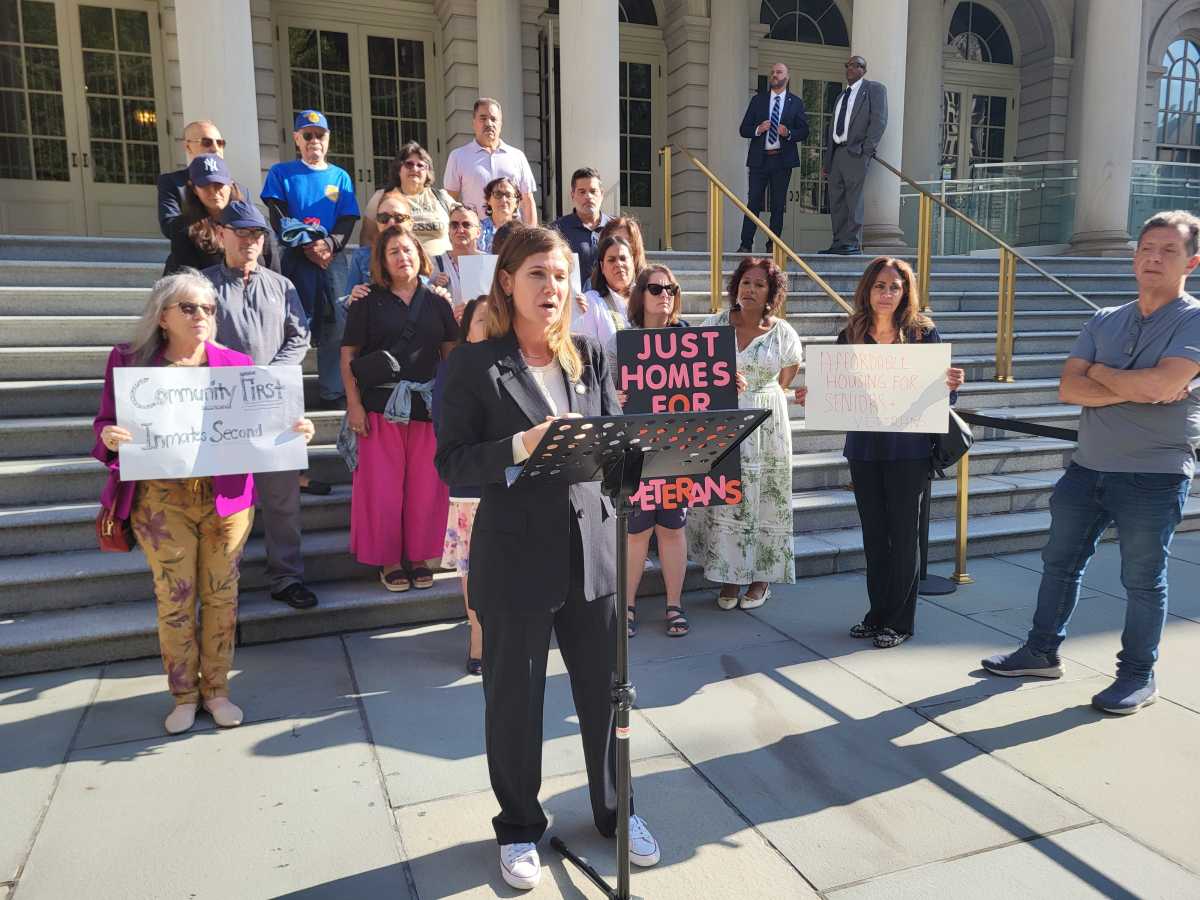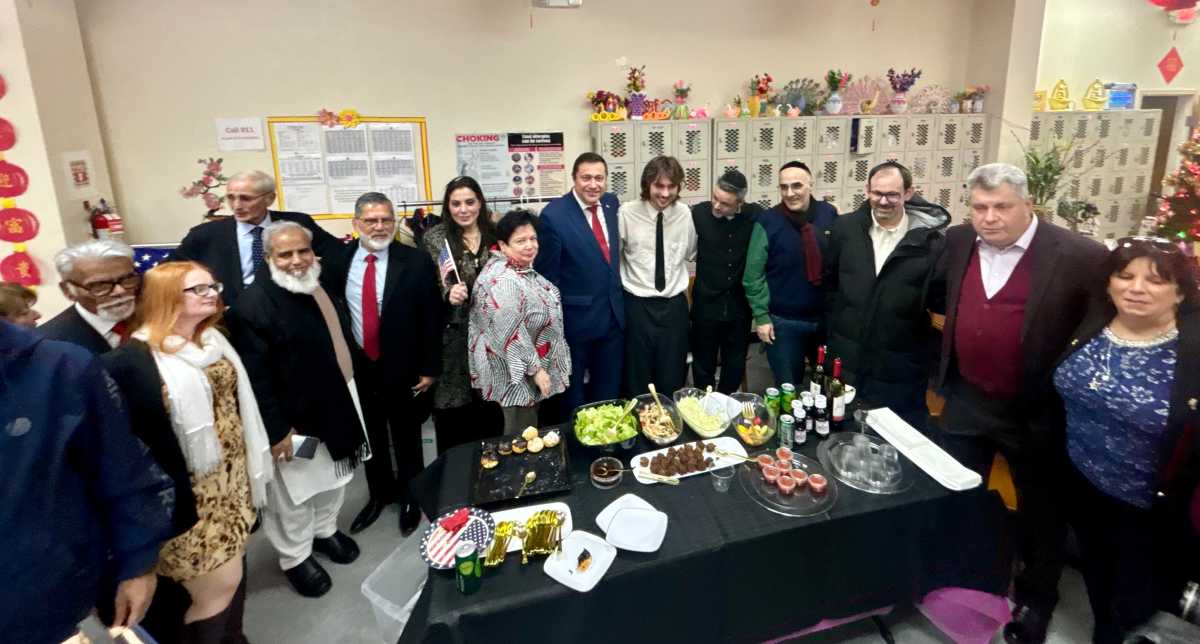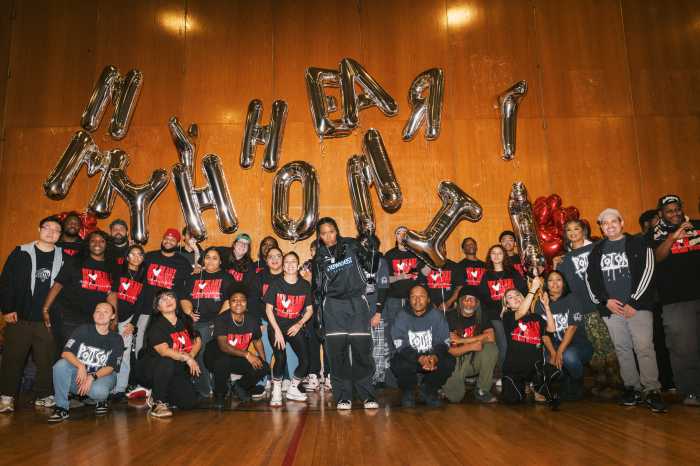Monday night, members of Friends of Fort Greene Park attended a Community Board 2 Parks Committee meeting, to reiterate concerns over planned renovations to Fort Greene Park.
Activists Lucy Koteen and Ling Hsu addressed the Parks Committee at the end of the board’s meeting, arguing that recently obtained Freedom of Information Law (FOIL) requests showed the Parks Department had misled the board and residents.
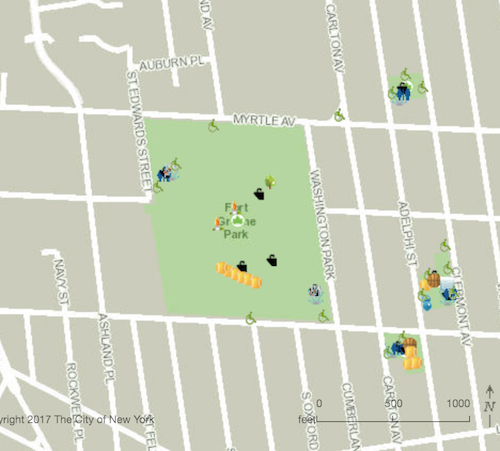 The renovations are part of the city’s Parks Without Borders initiative, a $40 million attempt to make eight city parks more accessible. In addition to Fort Greene park, other parks include Prospect and Jackie Robinson parks in Brooklyn, Van Cortland and Virginia parks in the Bronx, Seward Park in Manhattan, Flushing Meadows-Corona Park in Queens and Faber Park in Staten Island.
The renovations are part of the city’s Parks Without Borders initiative, a $40 million attempt to make eight city parks more accessible. In addition to Fort Greene park, other parks include Prospect and Jackie Robinson parks in Brooklyn, Van Cortland and Virginia parks in the Bronx, Seward Park in Manhattan, Flushing Meadows-Corona Park in Queens and Faber Park in Staten Island.
The project, which would cost $10.5 million and take about 18 months, would rebuild basketball courts, lighting, pavement and drainage systems. It would repave Myrtle Avenue’s sidewalks next to the park and revamp the entrance at Washington Park on the northeast corner.
It would also remove 58 London Plane, Zelkova, and Maple trees—a choice that Friends of Fort Greene Park and other local organizations have resisted. Koteen and Hsu argued that the Parks Department had originally stated that only 40 trees would be removed, all of which were “at the end of their life cycle.”
They said FOIL requests found that only nine of the trees were being removed for “condition” reasons. The rest were listed as removed for “design.”
“To put it bluntly, the Parks Department lied continuously throughout the process. They lied to the Community Board, they lied at the community input meetings, saying repeatedly that the trees were in bad condition and at the end of their life cycle,” said Koteen. “This is an absolute contradiction to city policy, to remove over fifty large shade trees.”
But Julian Macrone, Program and Development Manager at the Fort Greene Park Conservancy, argued that only 47 of the 58 trees being removed were a part of the Parks Without Borders project. He said that a number of the trees were in bad condition, and that they were planted closer together than is healthy under current planting standards.
The members of Friends of Fort Greene Park announced that Public Advocate Letitia James had sent letters to both the Landmarks Preservation Commission and Mayor De Blasio’s office, suggesting that the city complete a full Environmental Assessment Statement and expressing concerns over the future resiliency of the park.
“Fort Greene Park is a beloved community space that has served generations of Brooklynites,” said James. “As we seek to make investments in our parks, it is critical that we first seek public input and conduct an impact study, especially given the environmental consequences of this specific proposed redesign. In a city where green space is at a premium, we must do more to protect our parks, not threaten their existence.”
Koteen and Hsu said that they had surveyed residents in the park itself, and had found countless local concerns over the renovation. They said that they would appreciate the repair of the park, but that the project had ignored community input and pushed through unpopular plans.
“There are a lot of necessary repairs, the park’s in terrible shape, it hasn’t been maintained properly. The pavement is broken, the sidewalk is a disaster,” said Koteen. “Nobody is against maintenance, we all love maintenance. But do your job and maintain the park, that’s your job, not to come up with these fancy proposals.”
Koteen and Hsu said that the Parks Department had shown a lack of transparency throughout the project’s process, dismissing community concerns and withholding design information. Hsu said that they were exploring legal avenues to oppose the project, and that they hoped to “raise awareness on the lack of transparency and the misinformation given by the Parks Department, and even by the [Fort Greene Park] Conservancy.”
“We have recordings, and we are making transcripts, just to show the pattern of bad behaviors from a city agency,” said Hsu. “I think it’s kind of systemic of how they approach a public project like this. I think that’s alarming.”


